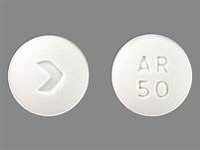Acarbose
CLINICAL USE
Antidiabetic agent
DOSE IN NORMAL RENAL FUNCTION
50–200 mg 3 times a day
PHARMACOKINETICS
645.6
15
1.7 (35% including
inactive metabolites)
0.32
3–9/Increased
DOSE IN RENAL IMPAIRMENT
GFR (mL/MIN)
25–50 Dose as in normal renal function
10–25 Avoid
Avoid
DOSE IN PATIENTS UNDERGOING RENAL REPLACEMENT THERAPIES
Unknown dialysability. Avoid
Unknown dialysability. Avoid. See
‘Other Information’
Unknown dialysability. Avoid. See
‘Other Information’
Unknown dialysability. Avoid
IMPORTANT DRUG INTERACTIONS
Potentially hazardous interactions with other drugs
gastrointestinal side effects with neomycin
ADMINISTRATION
Reconstition
–
Route
Oral
Rate of Administration
–
Comments
OTHER INFORMATION
population and the AUC is 6 times higher
undergone a total gastrectomy to treat
oxyhyperglycaemia: using a dose of
100 mg before meals.
with food
